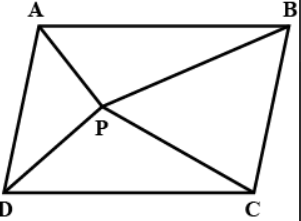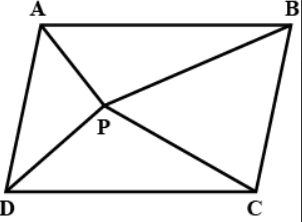If a, b are two points then r = (1 - p) a + p b represents Solution in Telugu
line
plane
plane passing through origin
sphere
The correct Answer is:A
Step by step video, text & image solution for If a, b are two points then r = (1 - p) a + p b represents by Maths experts to help you in doubts & scoring excellent marks in Class 12 exams.
Topper's Solved these Questions
- BOOK - DIPTI PUBLICATION ( AP EAMET)CHAPTER - ADDITION OF VECTORS EXERCISE - EXERCISE 2 SET - 110videos
ADDITION OF VECTORS
- BOOK - DIPTI PUBLICATION ( AP EAMET)CHAPTER - ADDITION OF VECTORS EXERCISE - EXERCISE 2 SET - 24videos
ADDITION OF VECTORS
- BOOK - DIPTI PUBLICATION ( AP EAMET)CHAPTER - ADDITION OF VECTORS EXERCISE - EXERCISE 2 SET - 48videos
ADDITION OF VECTORS
- BOOK - DIPTI PUBLICATION ( AP EAMET)CHAPTER - APPLICATIONS OF DIFFERENTIATIONEXERCISE - EXERCISE 2 SET-4 (SPECIAL TYPE QUESTIONS)15videos
APPLICATIONS OF DIFFERENTIATION
Similar Questions
I : If three points A, B and C have position vectors (1, x, 3), (3, 4, 7) and (y, -2, -5) respectively and if they are collinear, then (x, y) = (2, -3)
II : If a = i + 4j, b = 2i - 3j and c = 5i + 9j then c = 3a + b01:07View SolutionIf a = 2i + 3j - k, b = -i + 2j + k, then the ascending order of the following :
(A)|a+b|(B)|a−b|(C)|3a+b|(D)|a+2b|05:16View SolutionA : If the positon vectors of A, B are (2, 3, 5), (1, 1, 7) then the unit vector in the direction of −−→AB is −i−2j+2k3
R : Unit vector in the direction of −−→AB is −−→AB∣∣∣−−→AB∣∣∣07:37View SolutionA : In triangle ABC if a,A and R are fixed then Δa⋅secA+Δb⋅secB+Δc⋅secC=0
R : In any triangle , A+B+C = πandsoΔA+ΔB+ΔC=0View SolutionIf A and B are any two events such that P(A)+P(B)−P(AandB)=P(A)? then
(A) P(B∣A)=1
(B) P(A∣B)=1
(C) P(B∣A)=0
(D) P(A∣B)=003:34View SolutionIn Figure, P is a point in the interior of a parallelogram ABCD . Show that ar(APB)+ar(PCD)=12ar(^(gm)ABCD) aR(APD)+ar(PBC)=ar(APB)+ar(PCD)
 02:10View Solution
02:10View SolutionIn Figure, P is a point in the interior of a parallelogram ABCD. Show that ar(APB)+ar(PCD)=12ar (||gmABCD) ar (APD)+ar (PBC)=ar (APB)+ar(PCD)
 02:53View Solution
02:53View SolutionIf a, b, c are three noncollinear points then r = (1 - p - q) a + pb + qc represents If a, b are two points then r = (1 - p) a + p b represents
04:10View SolutionIf A and B are two events and P(B)≠1, prove that,
P(A/Bc)=P(A)−P(A∩B)1−P(B)
Hence, deduce that, P(A∩B)>P(A)+P(B)−1.01:39View SolutionA: If P(A) = 2/7, P(A∩B)=1/5 then P(A|B) = 7/10.
R: If A, B, are two events then P(A∩B)=P(A)P(B∣A)01:39View Solutionযদি A ও B দুটি ঘটনা এবং P(B)≠1 হয়, তবে প্রমাণ করো যে, P(ABc)=P(A)−P(A∩B)1−P(B) তারপর দেখাও যে,P(A∩B)>P(A)+P(B)−1
01:42View SolutionTwo events A and B are such that P(A)=14,P(AB)=14 and P(BA)=12 then P(AB)+P(A¯¯¯B)=
09:21View SolutionIf A and B are two events such that P(A)>0 and P(B)≠1, then P(A∣B') is ...
09:19View SolutionIf A and B are any two events such that P(A)+P(B)−P(AandB)=P(A)? then(A) P(B∣A)=1 (B) P(A∣B)=1(C) P(B∣A)=0 (D) P(A∣B)=0
05:09View SolutionIf a,1b,c and1p,q,1r form two arithmetic progressions of the common difference, then a,q,c are in A.P. if p,b,r are in A.P. b. 1p,1b,1r are in A.P. c. p,b,r are in G.P. d. none of these
02:21View Solution

